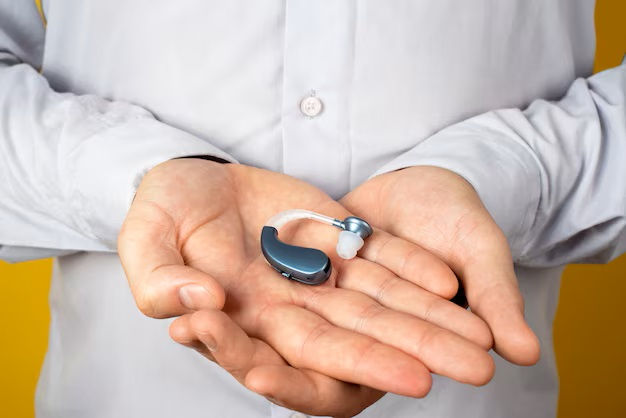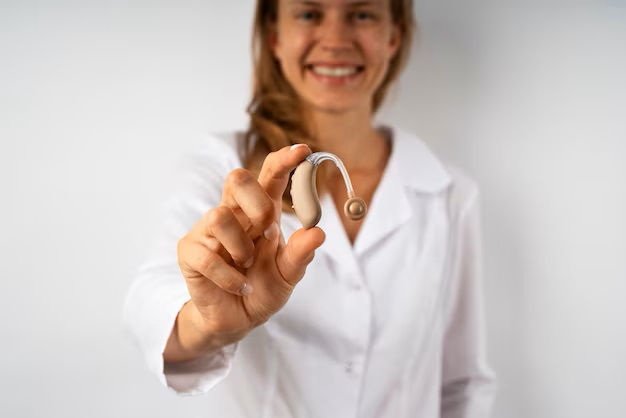Senior Hearing Tests, Protection, and Earwax Care
- totalhearingcenter
- Sep 4
- 4 min read

Healthy hearing is a cornerstone of communication, independence, and quality of life. As people age, maintaining ear health becomes even more important. Many seniors gradually notice changes in their ability to hear conversations clearly, especially in noisy spaces. While age is a natural factor, regular care and professional services can help reduce risks. Hearing protection services, routine hearing tests for seniors, and proactive earwax prevention all play key roles in keeping ears healthy.
The Role of Hearing Protection Services
Hearing protection services provide solutions that shield the ears from harmful noise exposure. Even everyday environments can contribute to gradual hearing loss. Seniors often attend family gatherings, community events, or use televisions and radios at higher volumes, all of which can strain the ears.
Professional services typically include:
Custom protective devices designed to fit comfortably
Guidance on healthy listening levels
Integration with hearing aids where needed
These services are vital because seniors are more sensitive to sound damage. Preventing further hearing decline ensures that communication remains easier and more enjoyable.
Why Seniors Need Regular Hearing Tests
Hearing tests for seniors are essential in identifying early signs of hearing loss. Unlike sudden changes, age-related hearing loss progresses slowly. Many seniors adapt by asking others to repeat themselves or by avoiding noisy places, but these coping mechanisms often hide the problem.
During a hearing test, audiologists typically:
Measure the ability to hear tones at different frequencies
Evaluate speech recognition in quiet and noisy conditions
Inspect the ear canal for blockages like earwax buildup
The results determine whether protective measures, hearing aids, or treatment options are needed. Detecting changes early prevents hearing issues from interfering with relationships and daily life.
Earwax Prevention for Seniors
Earwax is natural, but too much of it can block sound and create discomfort. Seniors are more prone to earwax buildup because natural processes that remove wax slow with age. Preventive care ensures that the ears remain clear and hearing is not obstructed.
Safe strategies include:
Using only professional earwax removal services
Applying doctor-recommended drops to soften wax
Keeping hearing aids cleaned and serviced
Avoiding home remedies that push wax deeper into the ear canal
Earwax prevention is a simple but effective part of long-term ear care.
The Connection Between Hearing and Healthy Aging
Hearing is directly linked to mental and emotional health. Seniors with untreated hearing issues often experience social withdrawal, frustration, or reduced confidence in public settings. Studies have also shown that untreated hearing loss can contribute to memory decline and cognitive impairment.
By focusing on hearing protection services, hearing tests for seniors, and earwax prevention, older adults can maintain stronger connections with family, friends, and community life.
Personalized Hearing Protection Devices
Not all seniors require the same kind of protection. Hearing specialists design solutions that meet individual needs, such as:
Earplugs for concerts or crowded events
Noise filters for home or outdoor use
Custom molds that work with hearing aids
These tailored solutions make it possible to enjoy activities without worrying about harmful noise exposure.
How Often Should Seniors Take Hearing Tests?
Experts recommend that seniors undergo hearing tests at least once every 12 months. For those experiencing noticeable changes, earlier check-ups may be needed. Regular testing allows for adjustments in hearing aids or protective strategies before hearing loss progresses further.
Much like routine eye exams or dental visits, hearing test for seniors form part of overall healthcare. They help detect problems before they impact independence and quality of life.
Everyday Earwax Prevention Habits
Earwax prevention doesn’t have to be complicated. Seniors can benefit from daily habits such as:
Staying hydrated to prevent hard wax
Limiting earbud use
Cleaning hearing aids regularly
Asking professionals for safe removal rather than trying at home
A simple prevention routine avoids blockages that can mimic hearing loss.
Supporting Seniors with Hearing Care
Families can play a major role in encouraging seniors to protect their hearing. Support may include scheduling appointments, helping with hearing aid maintenance, or encouraging the use of protective devices at noisy gatherings.
By showing support, families help seniors feel more confident about prioritizing ear health and reduce hesitation about seeking professional help.
Hearing Care and Quality of Life
Protecting hearing health is about more than listeningation, and a stronger sense of connection.
Key Insights
Hearing protection services prevent further decline from noise exposure.
Annual hearing tests for seniors identify gradual changes early.
Earwax prevention routines keep hearing clear and comfortable.
FAQs
Q1: Why should seniors use hearing protection services?
These services shield the ears from harmful sounds and help preserve remaining hearing strength.
Q2: How often should seniors schedule a hearing test?
At least once a year, though more frequent testing is recommended if changes are noticed.
Q3: Is earwax buildup more common in seniors?
Yes, because natural earwax clearing slows with age, making prevention and removal more important.
Q4: Can hearing protection be customized for seniors?
Yes, professionals design earplugs and devices that fit comfortably and work with hearing aids.
Q5: What is the safest way to manage earwax prevention?
Relying on professionals for removal and using safe drops under guidance is the best method.



Comments